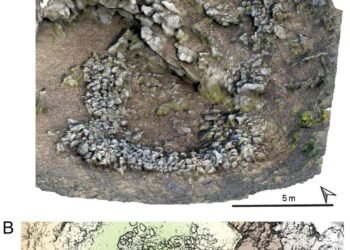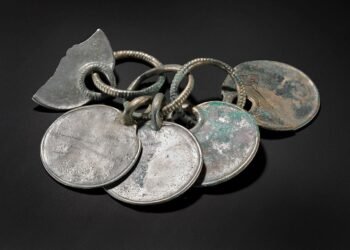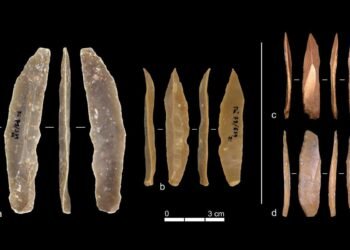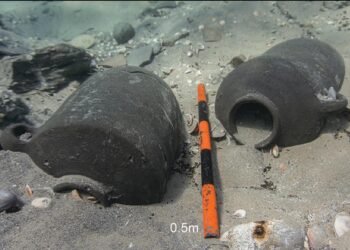A comprehensive analysis of 49 silver coins spanning the 7th and 8th centuries CE, has revealed the cross-channel connections that shaped early medieval Europe’s economy.

Published in the journal Antiquity, this study, conducted by a collaborative team from the Universities of Oxford, Cambridge, and Vrije Universiteit Amsterdam, unveils the origins of silver coinage that fueled Europe’s economic evolution.
The research, led by Professor Rory Naismith from the University of Cambridge and Dr. Jane Kershaw from the University of Oxford, aimed to unravel the mystery surrounding the silver used in these coins.
Using a combination of lead isotope and trace element analysis, the team delved into the chemical composition of the coins, housed at the Fitzwilliam Museum in Cambridge. Their findings revealed distinct patterns in silver sourcing over time, highlighting two major phases in the region’s economic development.
Contrary to previous speculations, the analysis revealed two distinct sources of silver. The earlier coins, dating from CE 660-750, trace their roots to the eastern Mediterranean, particularly the Byzantine Empire. This discovery challenges previous assumptions and underscores the deep international trade connections of the era.
According to the researchers, this Byzantine silver likely entered Western Europe decades before it was melted down, indicating a significant resurgence in trade and economic activity during this period.

The presence of Byzantine silver in early medieval Europe, far preceding its use in coinage, suggests a complex network of trade and diplomacy. Dr. Kershaw says, “These coins are among the first signs of a resurgence in the northern European economy since the end of the Roman Empire.”
Dr. Naismith remarks, “This was such an exciting discovery… Now we have the first archaeometric confirmation that Byzantine silver was the dominant source behind the great seventh-century surge in minting and trade around the North Sea.”
The study also unveils a pivotal shift around CE 750, marked by the emergence of a new silver source: Melle, located in modern-day France. This transition signifies the ascendance of Charlemagne and the Carolingian Empire, which exerted tight control over coinage production and economic structures. This sudden influx of Melle silver permeated regional silver stocks, reshaping economic structures across the North Sea zone.
Professor Naismith suggests, “Charlemagne drove this very sudden and widespread surge in Melle silver… We can now say more about the circumstances under which those coins were made and how the silver was being distributed within Charlemagne’s Empire and beyond.”
The findings underscore the agency of early medieval rulers in regulating their economies and shaping transnational trade networks. Dr. Kershaw reflects on the societal impact, stating, “Elites were liquidating resources and pouring more and more money into circulation. It would have had a big impact on people’s lives.”
The study also highlights England’s, specifically the kingdom of Mercia’s, dependence on French silver, revealing the intricate web of political and economic interactions that defined the period.























